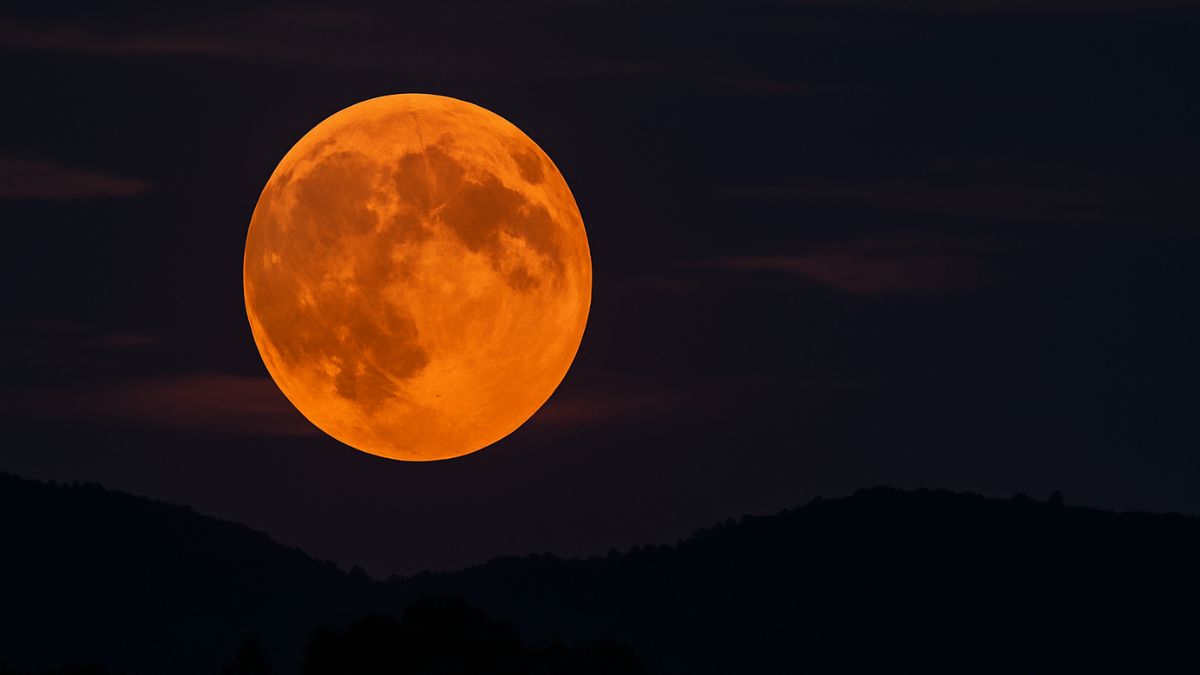New York: On the night of Thursday, July 10, 2025, skywatchers across North America will witness a golden celestial event — the Full Buck Moon. This month’s full moon is more than just another lunar phase; it rises just after sunset and hangs unusually low in the sky, giving viewers a dramatic and photogenic sight.
What makes this July full moon extra special is that it occurs just days after Earth’s aphelion, when our planet is farthest from the sun. That makes this Buck Moon the furthest full moon from the sun in all of 2025 — and one of the most atmospheric. In many regions, it will rise with a rich orange or golden hue, a result of summer humidity and Rayleigh scattering (the same effect that paints sunsets).
From ancient names to modern photography tips, this guide breaks down everything you need to know about the July 2025 Buck Moon — from moonrise times in your city to the cultural stories behind its name. Whether you’re setting up a telescope, snapping moonrise photos, or just soaking in the view, here’s why this full moon is worth a look.
Also Read: Pyrite Stone Benefits: Why Everyone’s Using This “Fool’s Gold” for Success
When Is the Buck Moon in July 2025?
The Buck Moon reaches full illumination at 4:37 PM EDT on Thursday, July 10, 2025. But since this happens before moonrise, the best time to see it is just after sunset, when it begins to rise in the eastern sky.
Here are some sample moonrise times in major cities:
- New York City: Moonrise at 8:54 PM EDT
- Los Angeles: Moonrise at 8:33 PM PDT
- Chicago: Moonrise at 8:44 PM CDT
- London: Moonrise at 9:46 PM BST
Use a moonrise calculator (like timeanddate.com) to find your local timing based on your ZIP code or GPS location.
Why Is It Called the Buck Moon?
The name “Buck Moon” comes from Native American and colonial traditions. July is the time when male deer, or bucks, begin regrowing their antlers, often larger and more impressive than the year before.
But that’s not the only name this moon goes by. Depending on the tribe or culture, July’s full moon is also known as:
- Thunder Moon – for the frequent summer storms
- Hay Moon – reflecting midsummer hay harvests
- Salmon Moon – from Indigenous groups who observed salmon returning upstream
- Raspberry or Berry Moon – celebrating the fruit harvest season
- Wyrt Moon (Celtic) – named for herbs and healing plants gathered in midsummer
The Buck Moon doesn’t just illuminate the sky — it echoes ancient traditions of growth, healing, and abundance.
What Makes the 2025 Buck Moon Unique?
July’s full moon in 2025 is special for several reasons:
- It’s the lowest-hanging full moon of the year (only rivaled by June’s Strawberry Moon). This low position creates the “Moon Illusion”, making the moon appear bigger when close to the horizon.
- It occurs just days after Earth’s aphelion (July 3, 2025) — making it the farthest full moon from the sun in the year.
- The Buck Moon takes place during a Major Lunar Standstill cycle, which happens once every 18.6 years. This causes extreme variations in the moon’s path, making it appear extra low in summer and very high in winter.
So if the moon looks bigger, redder, and more dramatic, it’s not your imagination — it’s science and timing aligning beautifully.
Where to Watch the Buck Moon for the Best View
To fully enjoy the Buck Moon experience, plan ahead:
- Find an open eastern horizon (like a hilltop, field, or beach).
- Arrive just before sunset to catch the moon as it rises.
- Bring binoculars or a telephoto lens if you want a closer look at the craters and “lunar maria.”
Pro tip: Capture the moon with buildings or trees in the foreground to enhance the illusion of size.
What Zodiac Sign is the July 2025 Full Moon In?
The July 2025 Buck Moon occurs in Sagittarius, a zodiac sign known for its adventurous and optimistic energy. Full moons in Sagittarius often highlight themes of:
- Freedom and movement
- Travel and truth-seeking
- Letting go of limiting beliefs
Whether you’re into astrology or not, this moon can feel like a cosmic call to expand your horizon, especially with its literal low path rising from the edge of Earth.
Fun Moon Facts: Celebrate Lunar History
- Apollo 11 landed on the moon on July 20, 1969 — just 10 days after a Buck Moon.
- There are 12 full moons in 2025, but July’s is the seventh, marking midsummer in the Northern Hemisphere.
- The iconic “photo of all humanity but one” was taken by astronaut Michael Collins during a Buck Moon week, showing the lunar module returning to orbit with Earth in the backdrop.
What’s the Next Full Moon After July?
The next full moon is the Sturgeon Moon, which rises on Saturday, August 9, 2025. It’s named after sturgeon fish that were plentiful in August and is the second full moon of summer.
Want to plan your moonwatching calendar? Here’s a quick list of upcoming moon phases:
- Last Quarter: July 17
- New Moon: July 24
- First Quarter: August 1
- Full Sturgeon Moon: August 9
The 2025 Buck Moon isn’t just another night sky event. It’s a visual poem — low, glowing, and full of quiet symbolism. Whether you’re a moon chaser, a nature lover, or just someone looking for a moment of awe, this is a night to step outside, look east, and witness the sky’s golden lantern rising above the world.
Mark your calendar: July 10, 2025. Moonrise. Don’t miss it.







